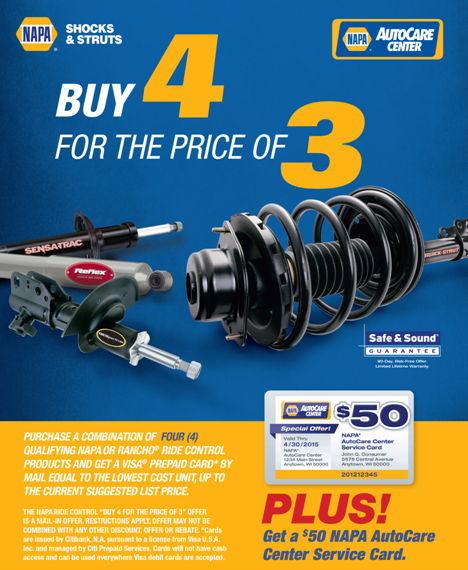Car Care Tips: Shocks & Struts
Advanced Auto Clinic Car Care Tips
Shocks & Struts
STRUTS
Struts are a structural part of the suspension system and are mounted to the chassis of the vehicle on the top, and they come down through. They give us a place to mount the coil spring, and the spring is what maintains the height of the vehicle, so we have a plate in here for the spring.
Car Struts are used on the front end of nearly every front-wheel-drive vehicle. They are more than shock absorbers and with a different name. A strut integrates numerous different suspension parts into one compact assembly. This includes:
The Coil Spring
The Spring Seats
The Shock Absorbers
The Strut Bearing
The Steering Knuckle
The shock absorber portion of the strut is the most commonly serviced part of the strut assembly.
Struts perform two jobs: They provide a dampening function like shock absorbers, and they provide structural support for the vehicle suspension. That means struts deliver a bit more than shock absorbers.
SHOCKS
A shock absorber keeps the vehicle from bouncing. It limits the rapid movement of the wheel when it hits something , like a pot hole. A shock absorber is basically an oil pump placed between the frame of the car and the wheels.
Upper & Lower Mounts
The upper mount of the shock connects to the frame & the lower mount connects to the axle, near the wheel.
Twin-tube design: the upper mount is connected to a piston rod, which is connected to a piston, which in turn sits in a tube filled with hydraulic fluid. The inner tube is known as the pressure tube, and the outer tube is known as the reserve tube. The reserve tube stores excess hydraulic fluid.
When the car wheel encounters a bump in the road and causes the spring to coil and uncoil, the energy of the spring is transferred to the shock absorber through the upper mount, down through the piston rod and into the piston. Orifices perforate the piston and allow fluid to leak through as the piston moves up and down in the pressure tube. Because the orifices are relatively tiny, only a small amount of fluid, under great pressure, passes through. This slows down the piston, which in turn slows down the spring.
In modern shock absorbers the faster the suspension moves, the more resistance the shock absorber provides. This allows shocks to adjust to road conditions and to control all things such as bounce, sway, brake dive and acceleration squat.
When To Replace Your Shocks & Struts:
- Noticeable fluid leak
- Shocks, struts or mounts look dented or damaged
- Tires show unusual wear patterns
Because shocks and struts have so much to do with the handling of a car, they can be considered critical safety features.
 Right now at Advanced Auto Clinic you can buy four qualifying NAPA Shocks and Struts for the price of three! Plus, with your purchase, receive a $50 NAPA AutoCare Center Service Card to use on a future service or repair of $75 or more! If your shocks and struts are worn, it may be time to replace them, so schedule your inspection today!
Right now at Advanced Auto Clinic you can buy four qualifying NAPA Shocks and Struts for the price of three! Plus, with your purchase, receive a $50 NAPA AutoCare Center Service Card to use on a future service or repair of $75 or more! If your shocks and struts are worn, it may be time to replace them, so schedule your inspection today!
Advanced Auto Clinic
1101 Ann St., Delavan, WI
262-728-2944
Offer good September 1 through October 31, 2014










